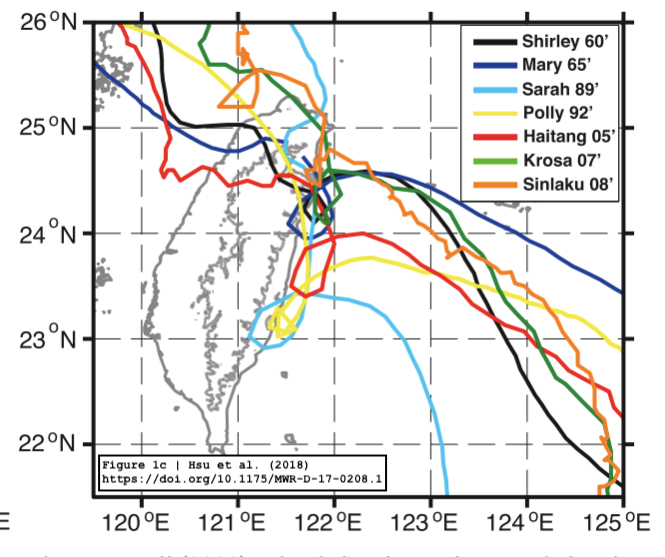Typhoon Gaemi Displays Unusual Spin Over Taiwan
Typhoon Gaemi (Kemi) is impacting Tawain this week with torrential rainfall leading to widespread flooding and strong winds. According to the Joint Typhoon Warning Center, "Typhoon Gaemi made landfall along the northern coast of Taiwan on [July 24th], after completing a rather wild counter-clockwise loop along the east coast of Taiwan during the preceding 12 hours."
While the loop of the storm is unusual, it is not unheard of, it has happened in the past in 1960 with Typhoon Shirley, Mary in 1965, Sarah in 1989, and most recently with Typhoon Sinlaku in 2008. This is research from scientists Hsu and team in (2018). This can happen when "the environmental flow is distorted or impeded by the Taiwan topography, thereby modifying the TC structure" according to the study. Below is a figure from the research highlighting the center tracks that have rotated around before, like Gaemi.

The storm will continue to move to the west through the next few days, bringing heavy rain to mainland China as it continues to weaken. The Joint Typhoon Warning Center forecasts Tropical Cyclones across the Indian and Western Pacific Oceans and was established in 1959 and manned by Navy and Air Force personnel to alert the Department of Defense to potential tsunami threats across the globe.
Where you are in the world determines what your tropical names are; typhoons are another name for hurricanes and occur in the far western Pacific Ocean.